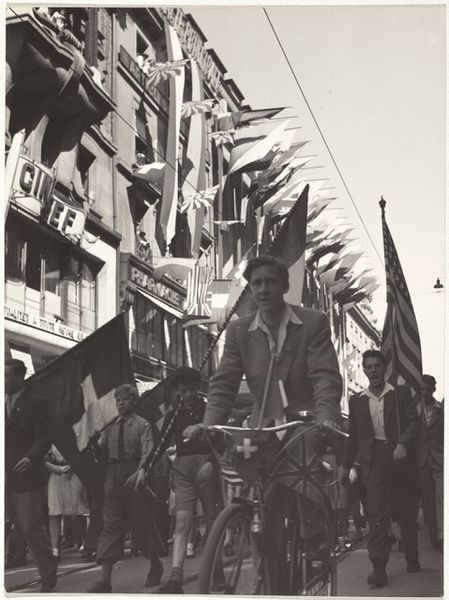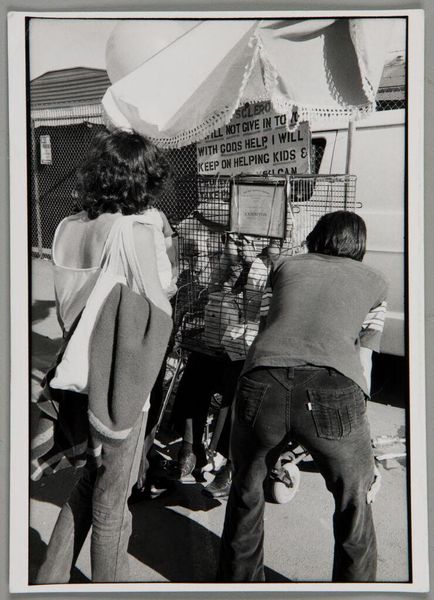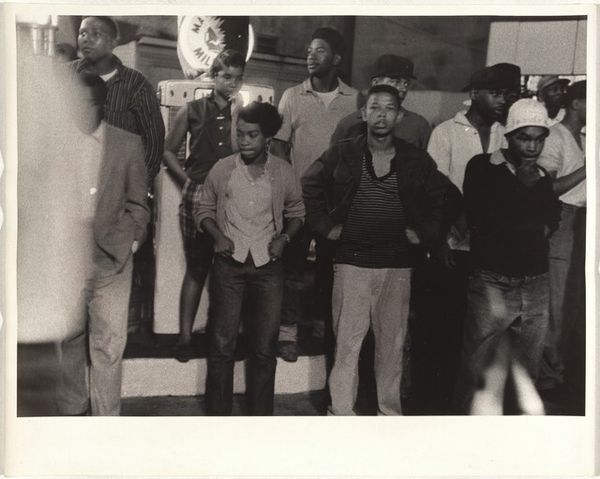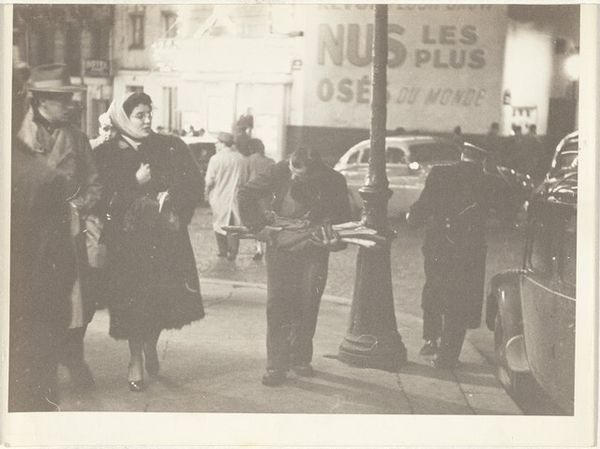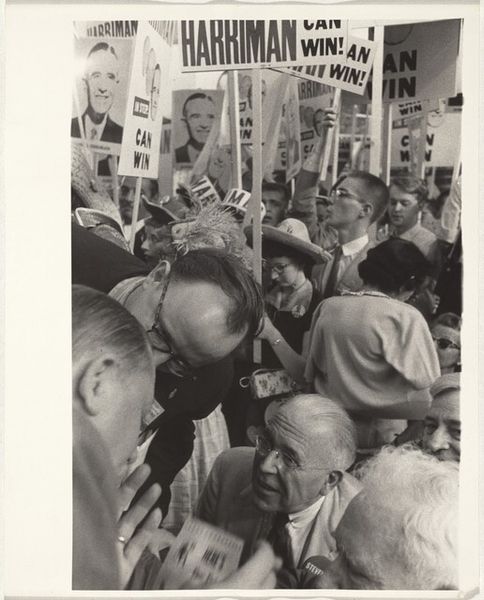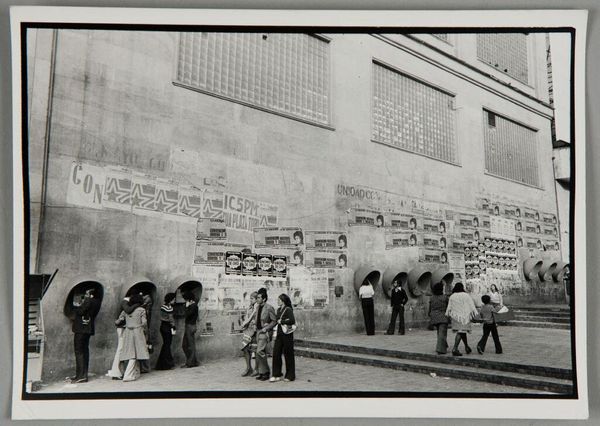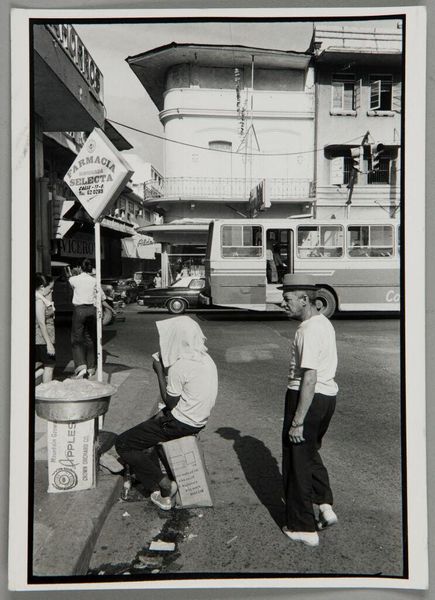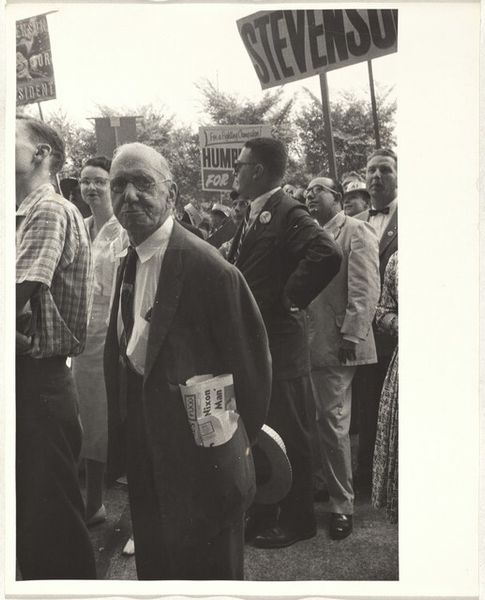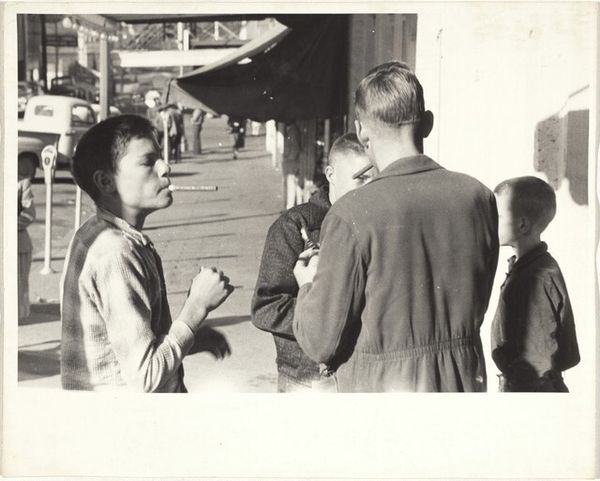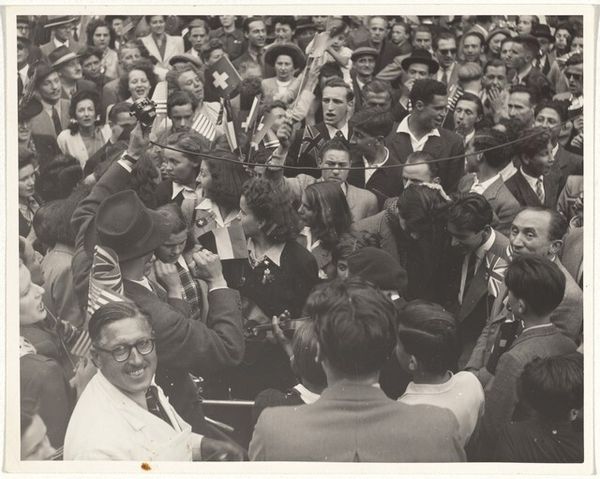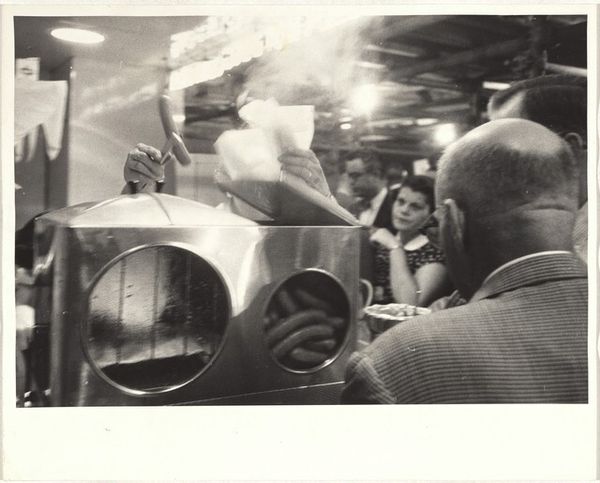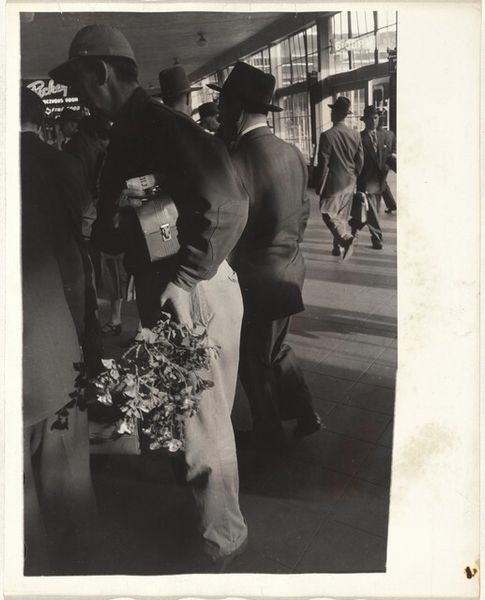
photography
#
narrative-art
#
street-photography
#
photography
#
modernism
#
realism
Copyright: Henri Cartier-Bresson,Fair Use
Editor: Here we have Henri Cartier-Bresson's "Violent Poster," taken in 1961. It’s a black and white photograph, seemingly documenting a public display. I’m struck by the contrast between the somewhat staged, propagandistic image on the poster and the candid feel of the surrounding street scene. What aspects stand out to you? Curator: It’s the making of the image itself. The materials evident: paint, cheap poster board, photographic chemicals. Consider who is crafting and carrying this "violent poster," likely ordinary people. Bresson captures them, framing the workers as part of a broader system of image production and distribution, one that aims to shape opinion, to manufacture consent. Are they laborers or political actors? What power do they have in the image's production versus its message? Editor: So, you're seeing this as a documentation of the physical act of creation and dissemination, rather than the message of the poster itself? Curator: Precisely. What message the image attempts to convey is almost secondary to *how* it's attempting to reach people. Note the snake wearing the bourgeois tophat, the swastikas on the snake’s midsection. Think about the implied funding to source supplies. How do those economic inputs shape or impact that message? The posters aren't simply appearing out of thin air; they are being produced and reproduced through collective effort. Editor: That makes me think about the role of photography here too. Bresson’s photograph is now another layer of mediation, another instance of material production. Curator: Exactly! Photography flattens the three-dimensional reality of this staged event to a 2D object to be reproduced, studied and sold. Consider Bresson’s stake in that process, too. Editor: That is fascinating. I hadn't considered the implications of labor and materials within the context of street photography like this before. Thanks for offering a new perspective! Curator: Of course, this image presents a challenge. We must examine the economic realities of image making to begin understanding.
Comments
No comments
Be the first to comment and join the conversation on the ultimate creative platform.
